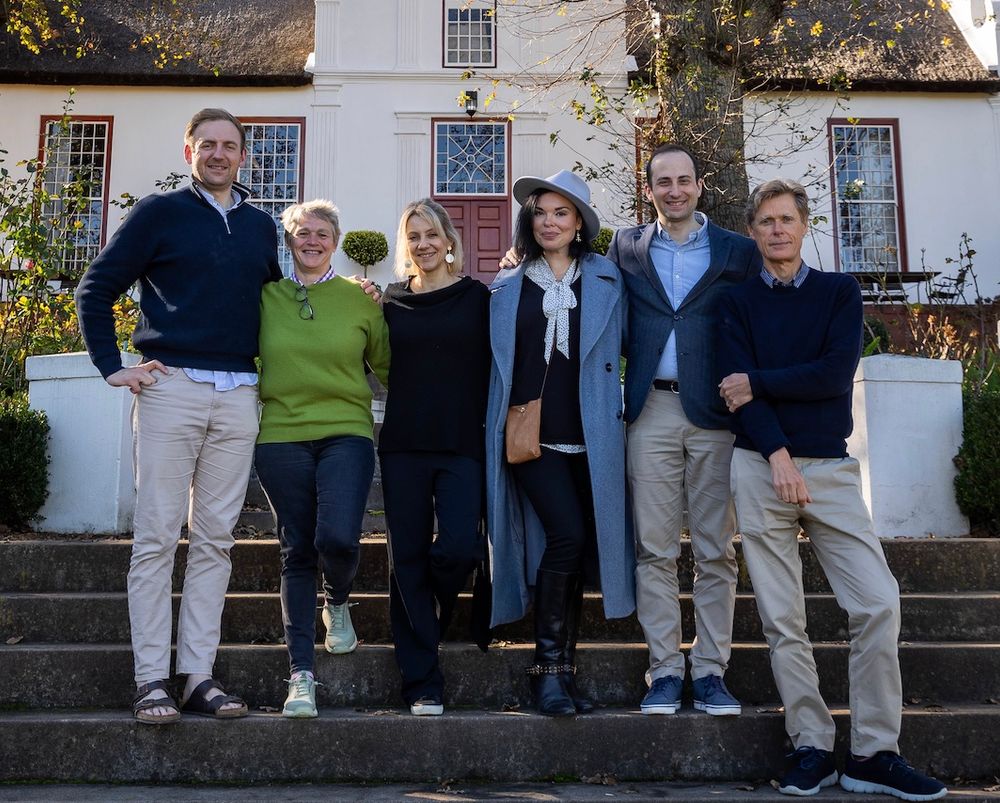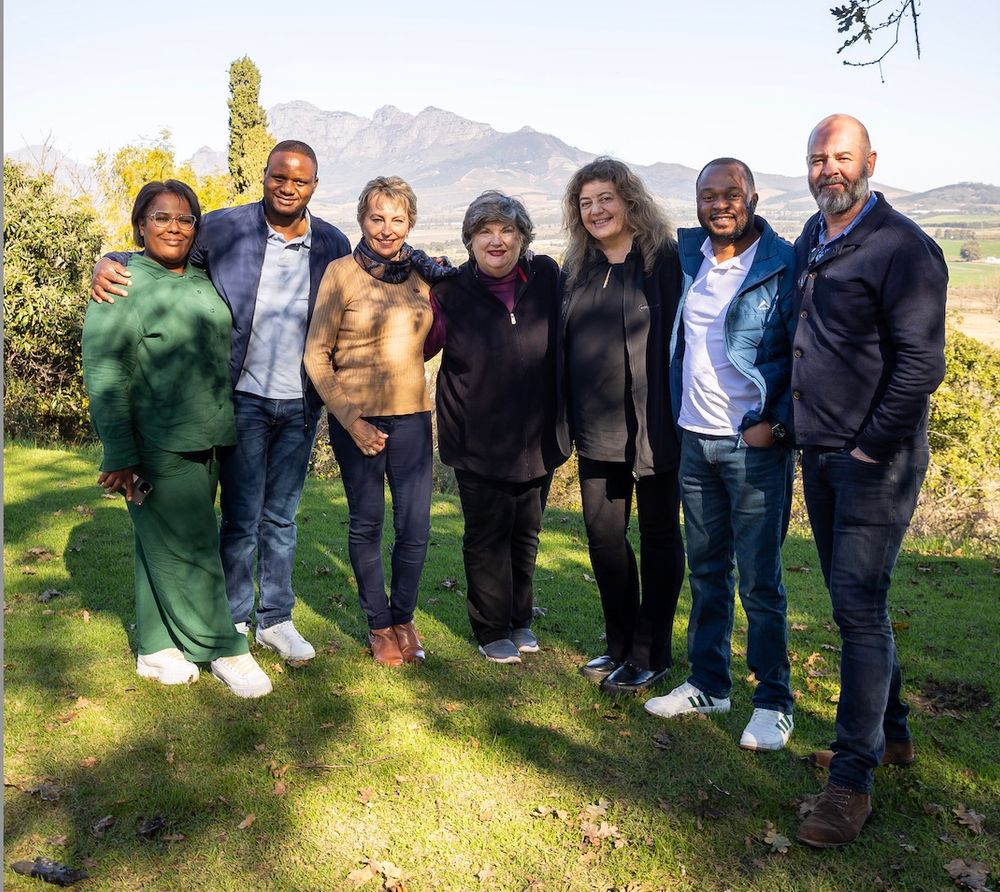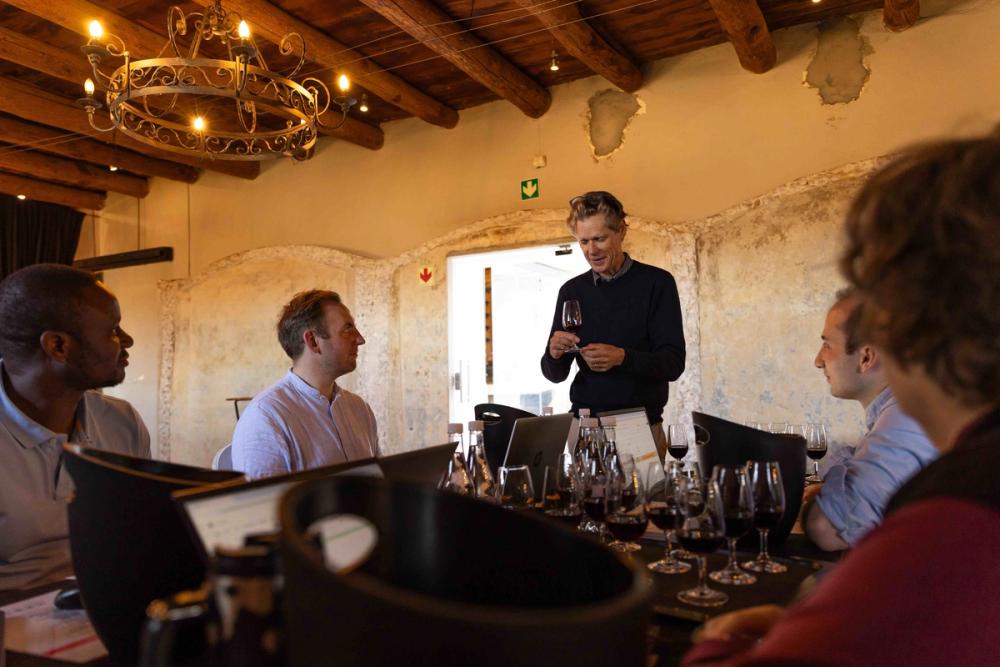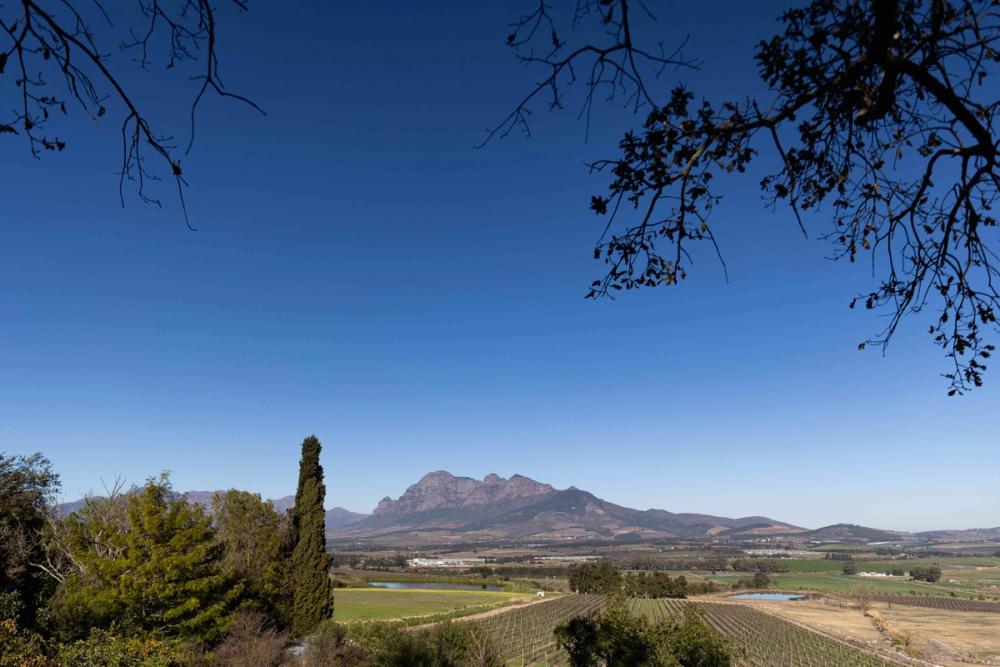Wine is almost never grown in an ugly place. It is one of the things that makes writing about wine such a joy, the continued opportunity to visit beautiful vistas, rolling hills and green vineyards.
Yet, of all the picturesque winelands of the world, it is hard to imagine a more stunning one than that of South Africa’s Western Cape. It is a country of visual extremes with colours almost too bold to believe. The soaring red mountains, the brightest of green valleys and vines, the wide open blue skies of Africa and the multicoloured sunsets that flood them come nightfall.
It also happens to be my own personal preference when it comes to buying wine, so I was absolutely thrilled to be included in the IWSC’s judging panel in Stellenbosch this year.

The UK-based judges that took part in IWSC's South African wine judging. Picture Joseph Dafana
I joined fellow wine judges Matthew Horsley, wine buyer at The Wine Society, Vincenzo Arnese, director of wine for Raffles at The OWO, Xenia Ruscombe-King MW, wine buyer for Waitrose Cellar and Rebecca Palmer, associate director andhead of buying for Corney & Barrow, under the wine committee chair, John Hoskins MW, to stay and judge at the charming Diamant Estate, less than an hour’s drive from Cape Town. We were also joined by South African wine trade experts who also took part in the judging.
Time and place
It is an honour to be asked to judge in situ, but it is also incredibly valuable for various reasons and for both those judging and those submitting their wines. Local producers can submit their wines easily, without international travel, export costs of potential Brexit border issues meaning more smaller producers can be readily included.

The judging also included leading figures within the South Afican wine industry
For those judging it helps foster relationships and networks across the globe and it allows real life conversations with and visits to neighbouring winemakers. It can reveal and challenge certain engrained “euro-centric” ways of tasting or opinions on what makes a “good” or “bad” style of wine.
It also gives judges the opportunity to expand their own descriptors and reference points as well as get first-hand experience of changes and developments happening in the region. The brainchild of IWSC chief executive, Christelle Guibert, has been an enormous success.
Each table is a panel that includes a mix of judges from South Africa and the UK that blind tastes a selection of wines. We judge individually, but at the end of each flight the wines are discussed and any outliers are given the chance to defend their score and convince the others of the merits of a different result.
“There was a really good standard throughout,” says Ruscombe-King. “We awarded an awful lot of medals. I came across a lot of gold medals in all sorts of classifications”.
Palmer agrees when it comes to South Africa’s winemaking prowess: “There is a stylistic mastery which we’re seeing much more of. There’s so much more freshness and integrity in the wines. And they’re an absolute smash.”
In fact, over 95% of the wines entered were awarded bronze, silver or gold, with 36 prized golds out of 520 medals. Only four of these, however, went to South Africa’s premier white grape Chenin Blanc.

There was a chance to taste individually and then discuss results with other judges
“People might be surprised when we look at the golds that there aren’t as many Chenins as other varieties,” says Hoskins “but when the wines were good, they were exceptional. Winemakers have dialled back on overt richness and allowed the natural quality to show through.”
He adds: “Loire style elegance with a bit more joy from the climate” like the Perdeberg Endura Single Vineyard 2022 at 96 points.
Pinotage plaudits
Stellenbosch Cabernet Sauvignons and Bordeaux blends are known for their robust elegance, but it was the controversial Pinotage, a grape born in South Africa from a crossing of Pinot Noir and Cinsault, that surprised the UK judges the most.
Typically known for its toffee, coffee and occasionally rubbery notes, the modern style is much lighter and fresher, almost Beaujolais-like and much more like the grape’s parentage.
“There were some really delicate, bony examples which were fantastic,” says Palmer. “It’s that range that is really exciting,” adds Hoskins “it’s this new wave of Pinotage, medium bodied but with some of those chalky tannins, good acidity, a style that didn’t really exist [before]”.
Flagstone Winery’s Writer’s Block Pinotage 2021 from Swartland was the judges top choice at 95 points.
South Africa’s traditional method sparkling was another highlight with five gold medals and Villiera Monro Brut 2017 coming out as one of the IWSC’s top scorers of the competition at 97 points.
Out and about

There was also a chance for the judges to visit local wine estates and see at least some of South Africa's stunning landscape
Of course, the joy of visiting another country is getting to explore some of it and in-between the days of judging were a host of treats such as dinner with the Cape Winemakers Guild and the Old Vine Project, visiting the winery of The Pledge and the winemakers of the Aghulas Wine Triangle.
One very special evening we were invited into the family home of the iconic Meerlust Estate for a candlelit home cooked meal prepared by eighth generation Hannes Myburgh, where vintage wines were generously poured by the roaring kitchen fire.
The grand finale of the trip was a magical braai lunch at Vergelegen Estate after a tasting and safari through their nature reserve. Sustainability is a key element of South African winemaking and nowhere we visited exemplified this more.
Sitting on the sunny deck shaded by tall silver-barked evergreens, overlooking the wide, cool lake and towering craggy mountains. We toasted the trip with fantastic Cap Classique and coffee heated over the camp fire and served with sweet condensed milk.
“South Africa is now taking the best of Old and New World,” says Hoskins “and offering it with extraordinary value too”.
This truly is a compelling place, with exciting, excellent wines. It was hard for us all to tear ourselves away and head to the airport, but the one consolation is that South Afircan wines are continuing to grow in skill, style and quality – and thankfully we get to drink them in the UK too.
* You can see all the medal winners in the IWSC South African awards here.
































